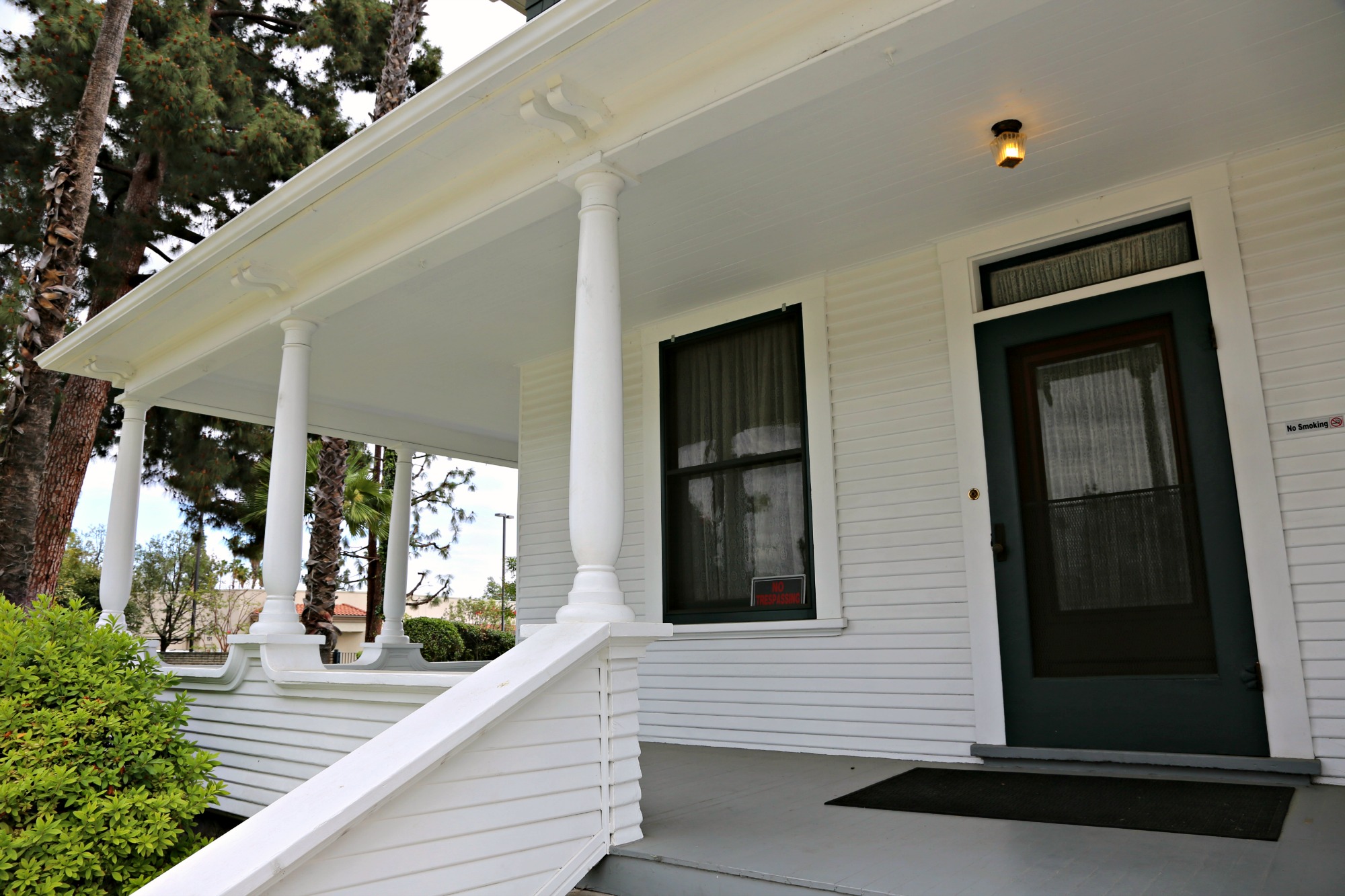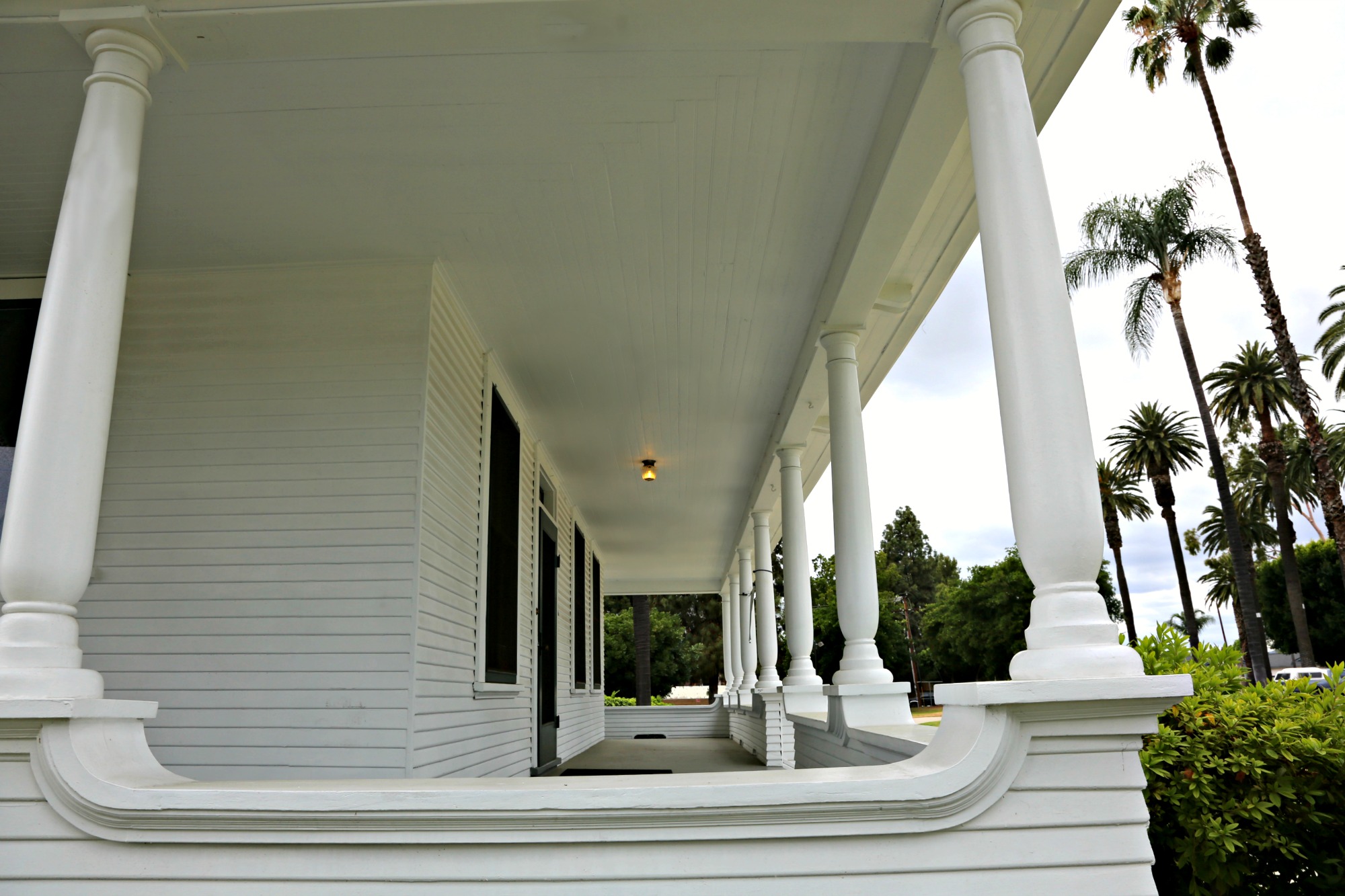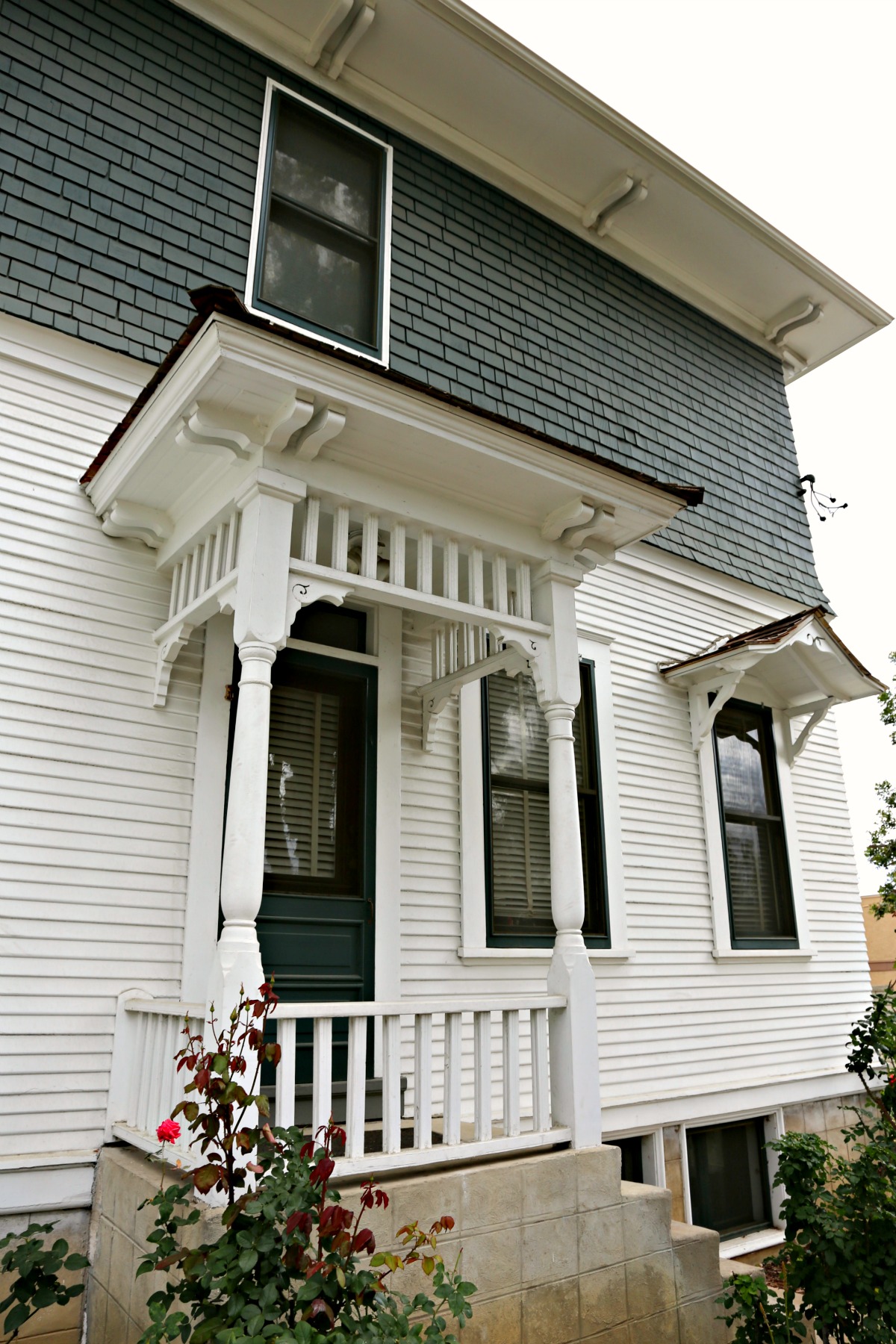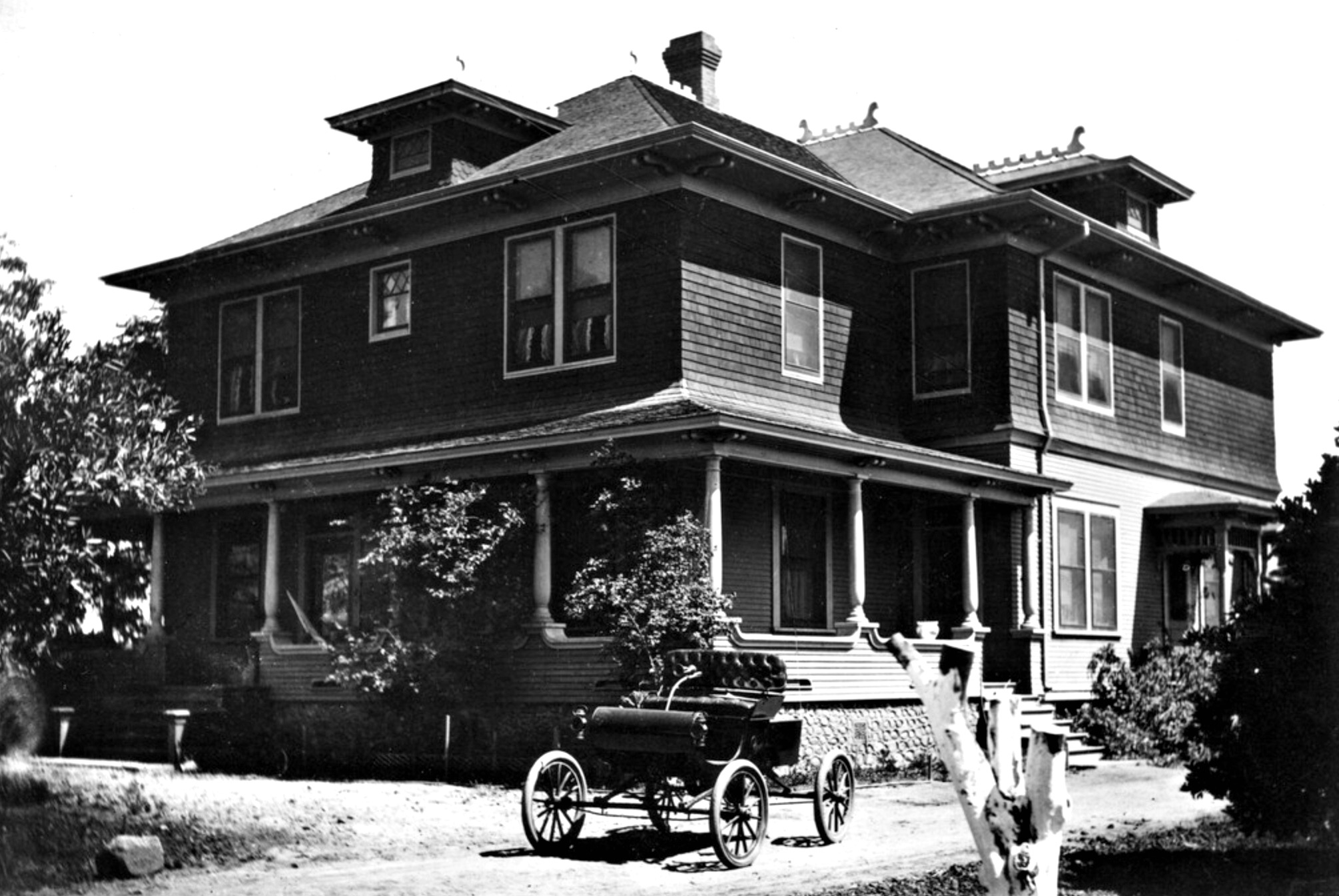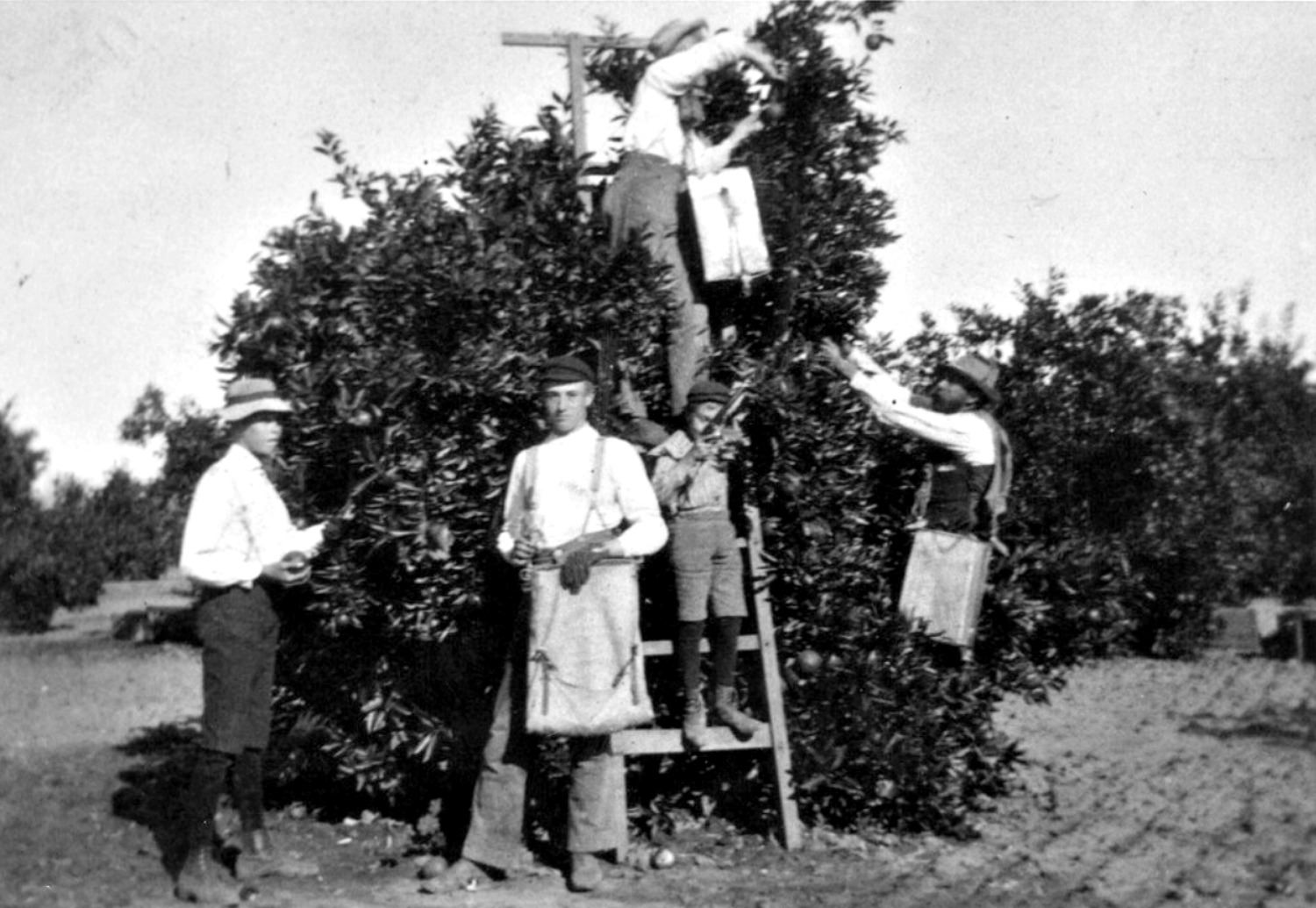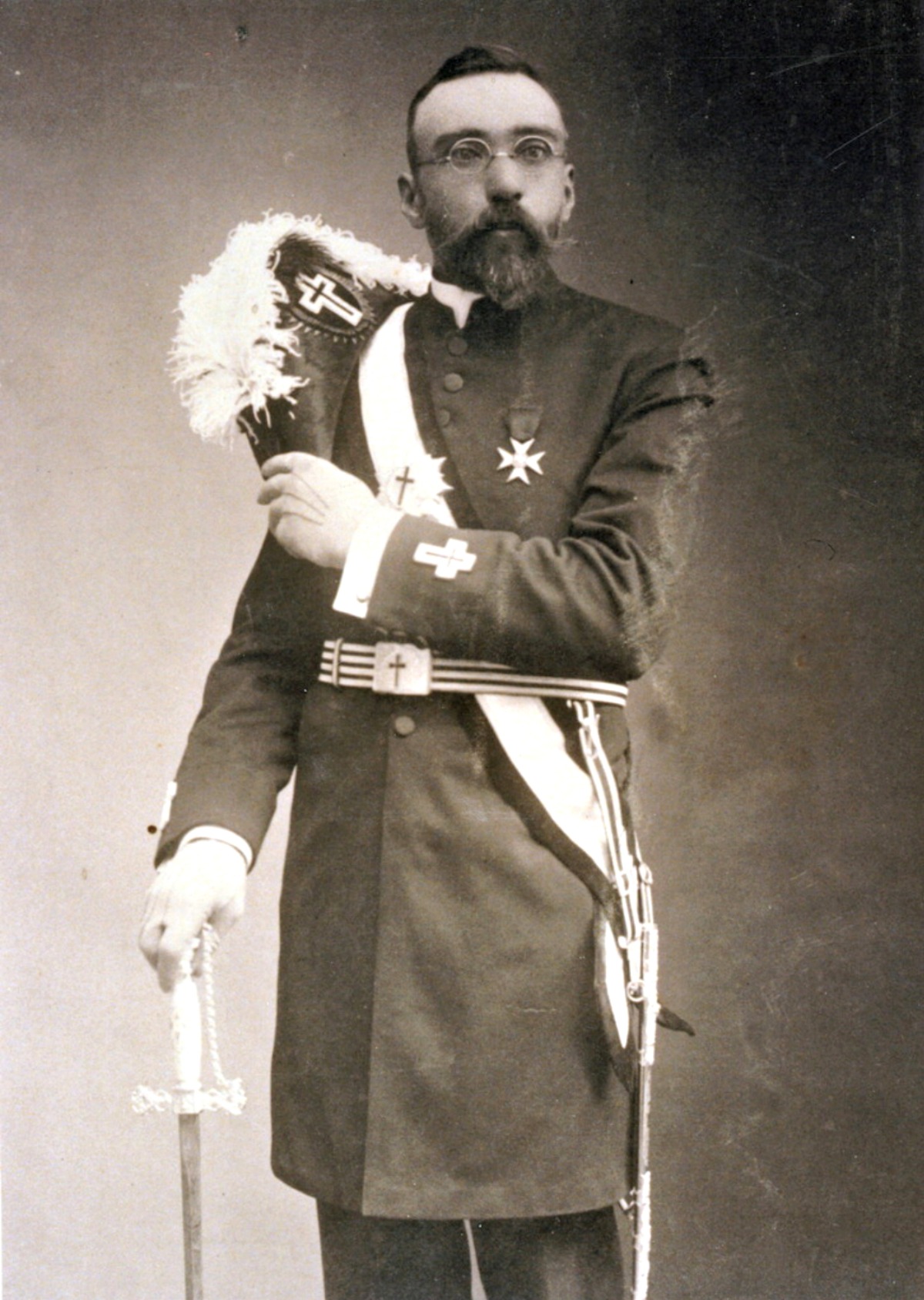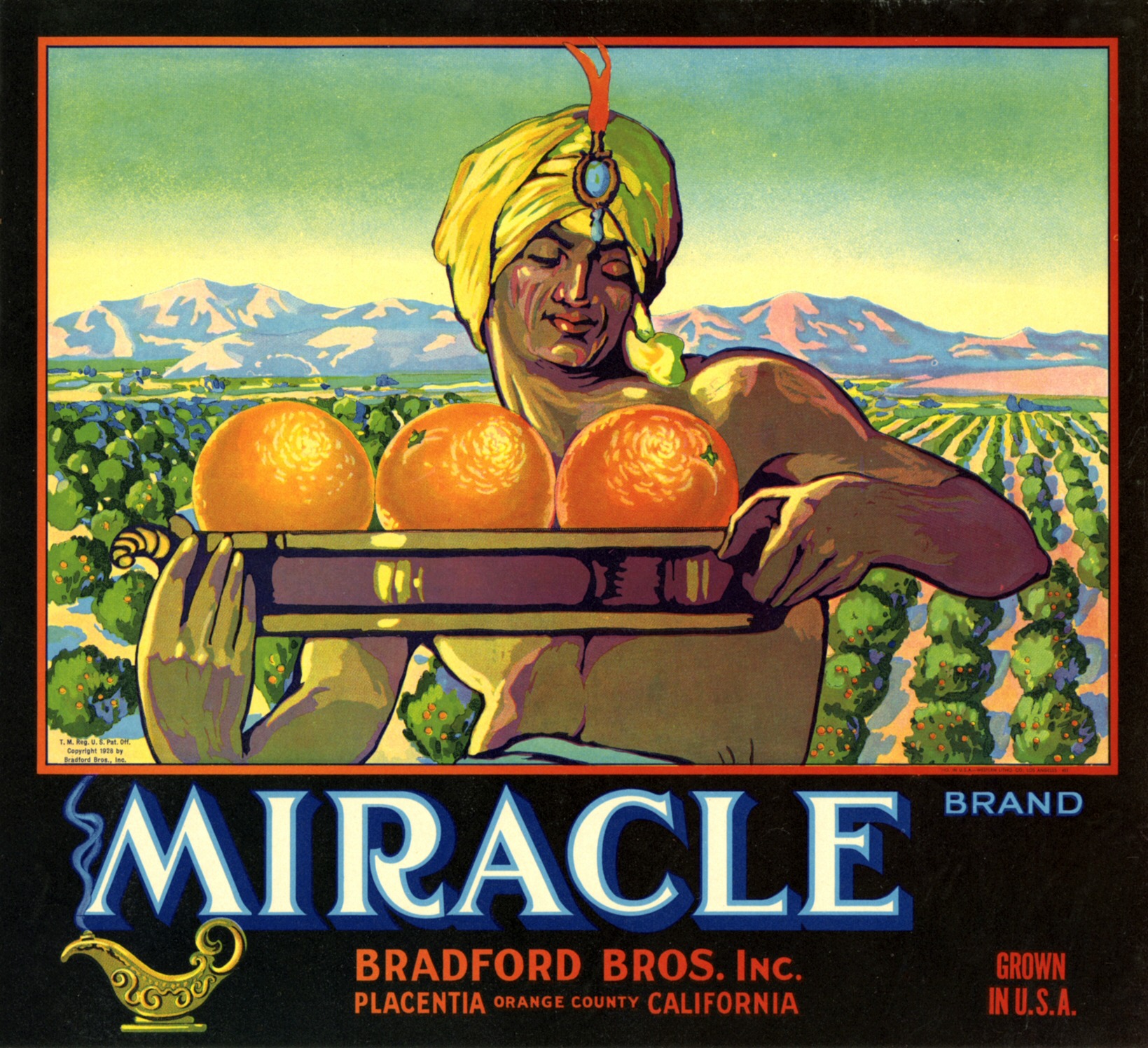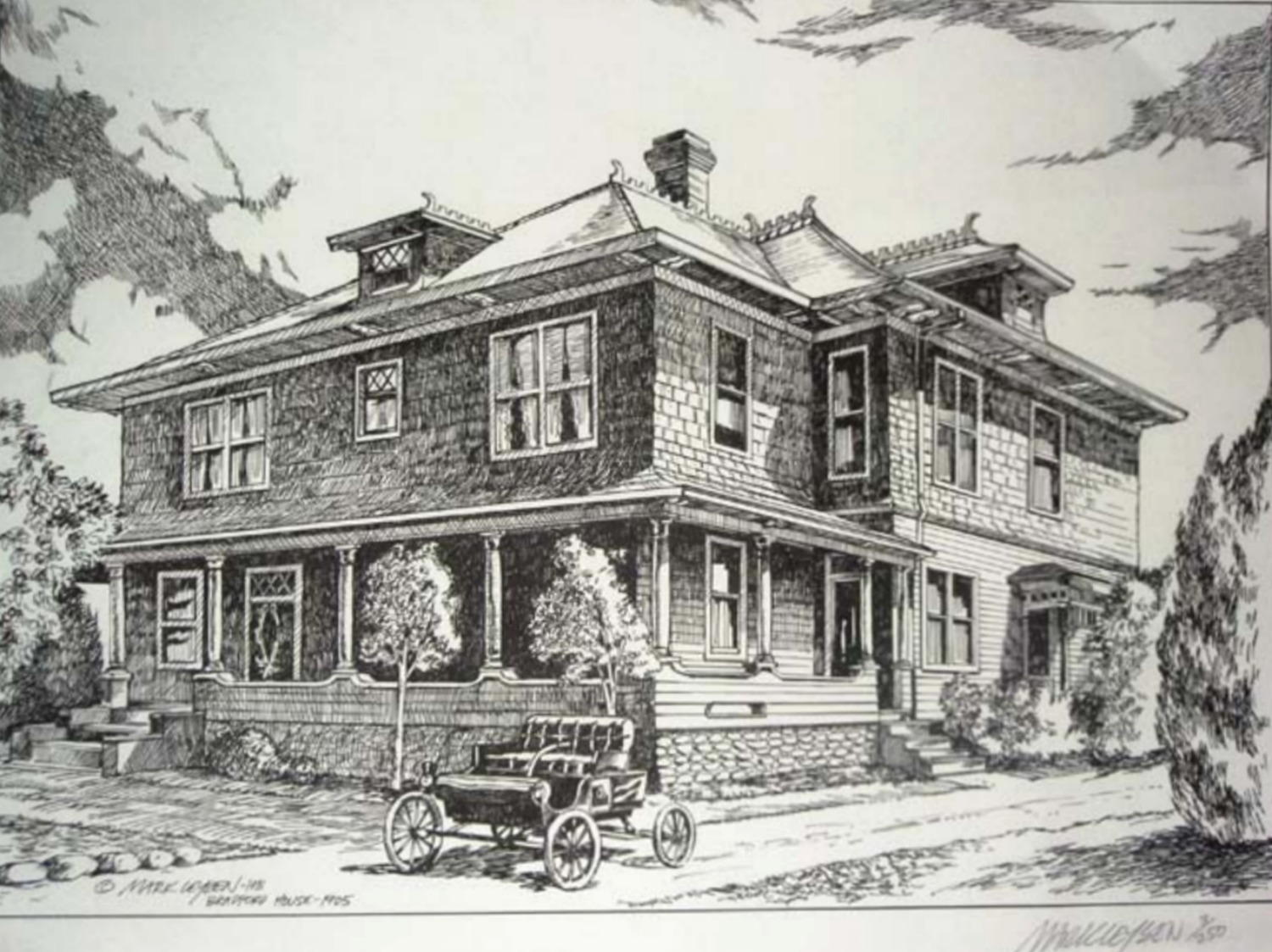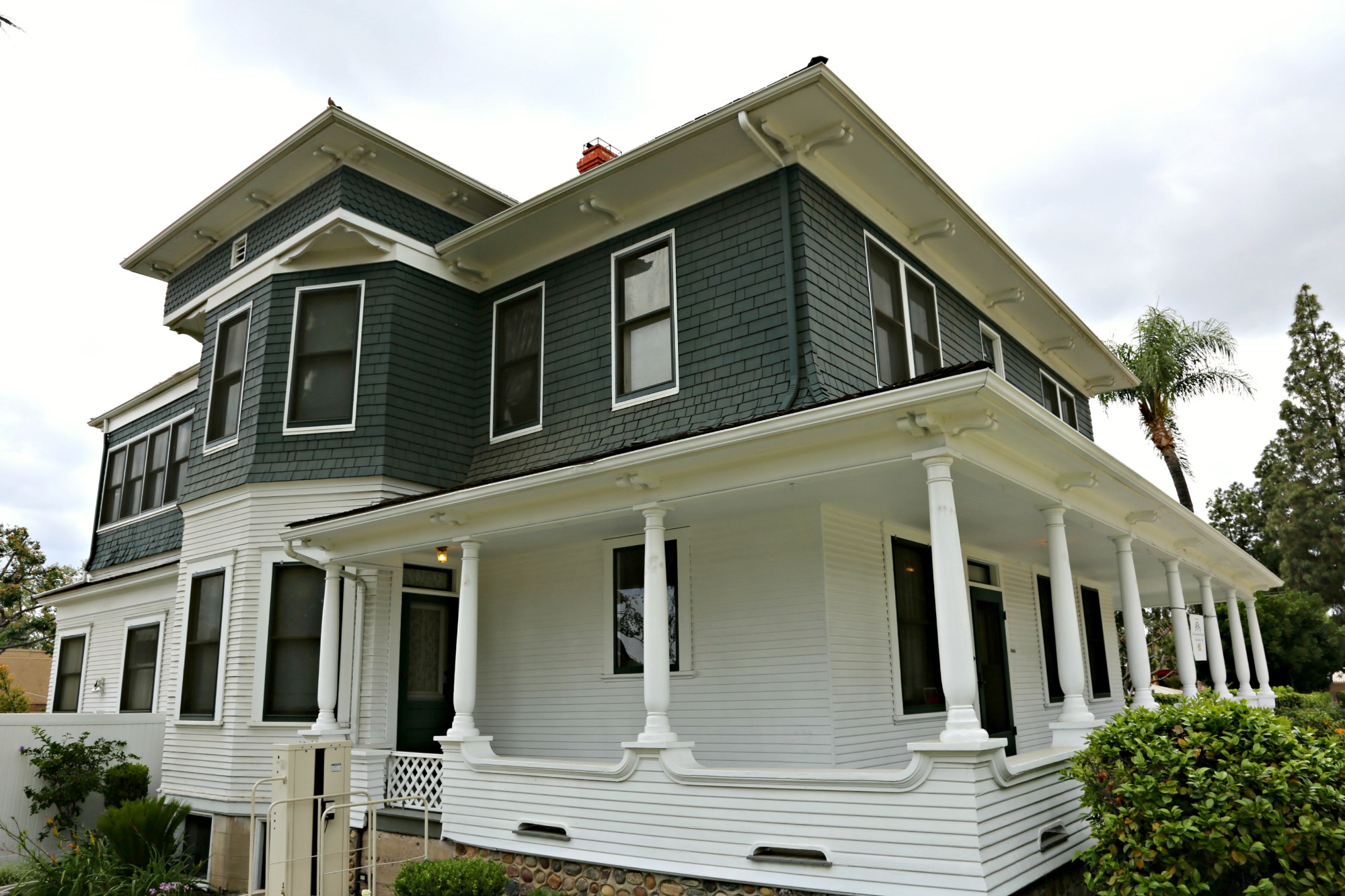The Bradford House
136 East Palm Drive, Placentia, California
In 1872, it was the gas lamps of Boston that lured 12-year-old Albert Sumner Bradford from his home in Shapleigh, Maine, to work for a market gardener in the big city. Some 15 years later, the promise of sunshine and agricultural gold enticed Bradford to hop a train to California. His instincts were spot-on: in a few years he was able to bring his wife, Fannie, and their three children to join him in the West.
There, Bradford bought 20 acres in 1890 and founded the Tesoro Rancho, where he grew citrus trees, helped bring the railroad to the region, built packinghouses, and founded the city of Placentia. With the fortune Bradford quickly made in ranching and banking, he had a large two-story estate constructed in 1902 from plans drawn by James Stafford. The household was growing: Fannie gave birth to another boy and her sister moved from the East Coast to live with them.
Victorian and Colonial Revival
Built for $8,000, the 6,000-square-foot home, variously described by different sources as a modified Queen Anne Victorian and a Colonial Revival, has 15 rooms, a full basement, and a wide front veranda. Distinguishing features include plain Colonial Revival columns and decorative door overhangs on the west and south sides. A projecting bay on the east side of the house is slightly more ornamental than the rest of the house.
In a 1970s assessment, architect Eric Lassen noted: “It is an absolutely excellent example of a prosperous turn-of-the-century rural ranch home. The house is formal, bulky and imposing. Its massing and the treatment of the second floor wall shingling suggests a possible influence of the shingle style.” He continued, “Also of particular interest is the extremely pronounced second floor splayed transition to the veranda roof.”
Bradford's Legacy
A.S. Bradford, “the father of Placentia”, was instrumental in the development of California’s citrus industry. He helped organize the Fullerton-Placentia Farmers Union and the Southern California Fruit Exchange. For many years he was a director for the Anaheim Union Water Company, served on school and local company boards, was active in local politics, and was a uniform-wearing high mason. He died in 1933.
Two generations of the Bradford family lived in the Palm Drive home before they gave it to the city in 1973 for preservation. Since 1974, the Placentia Founders Society has diligently maintained the home as a historic museum. The Bradford House hosts public and private events such as chamber concerts, luncheons, weddings, and December candlelight tours. It was listed to the National Register of Historic Places in 1978.
Illustration of house courtesy of the Placentia Founders Society; Archival photos courtesy of the Orange County Archives


